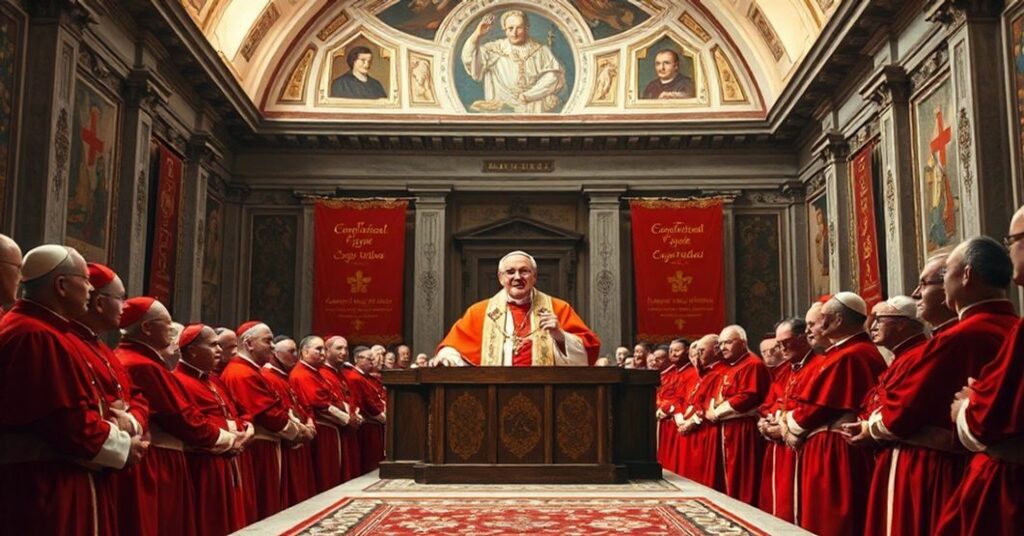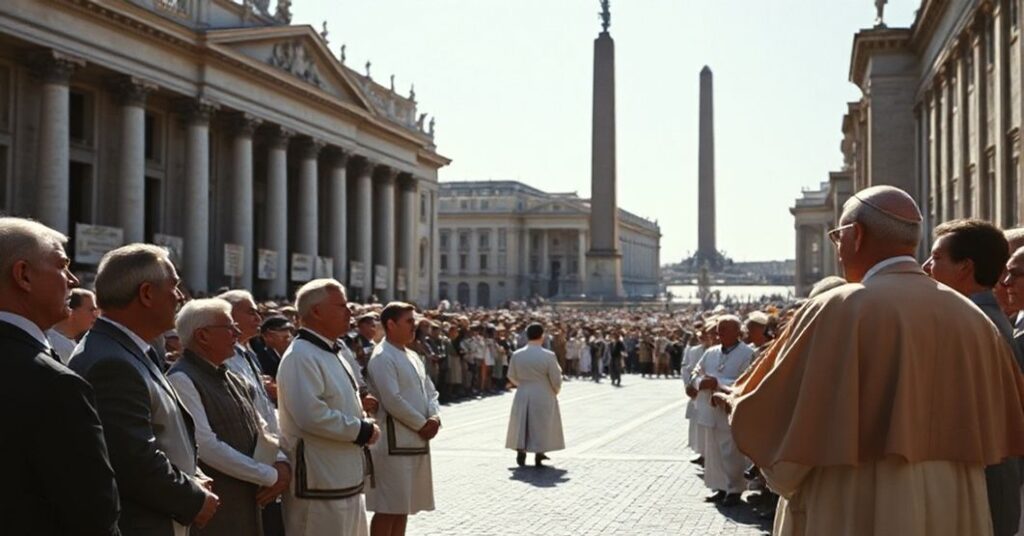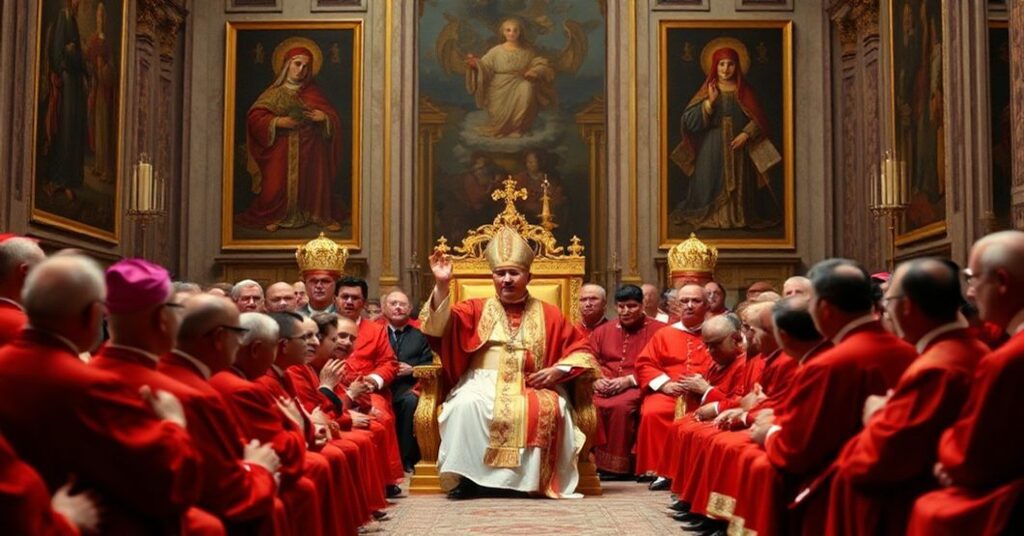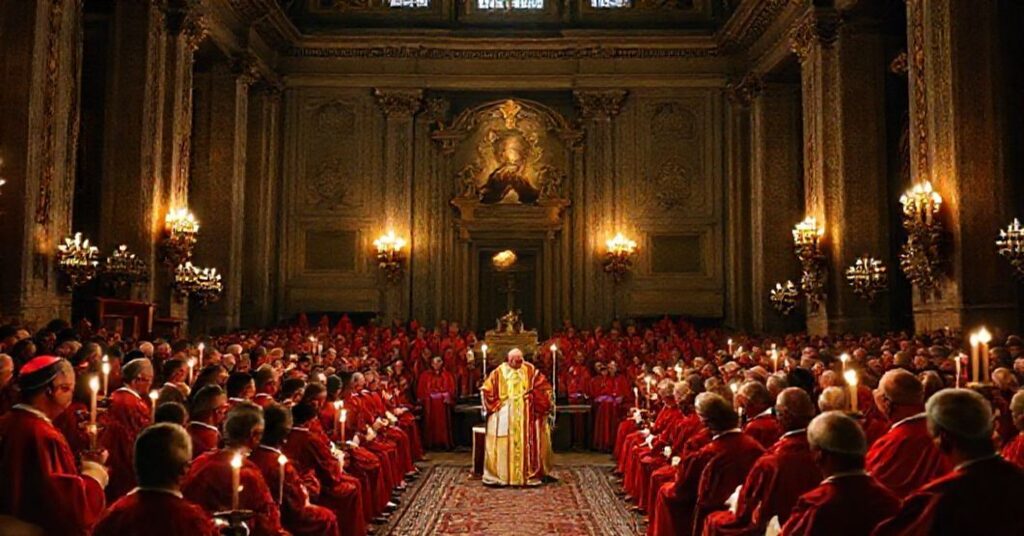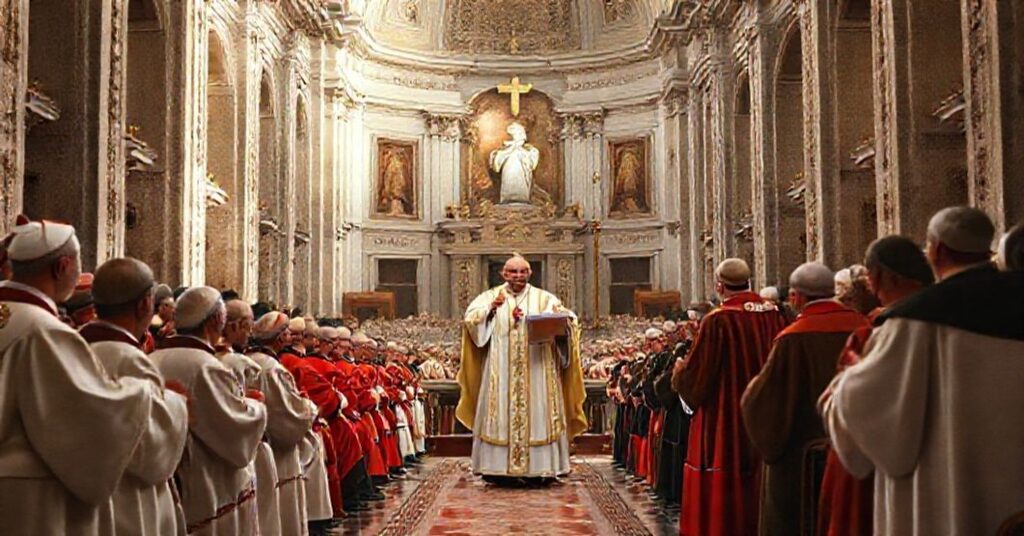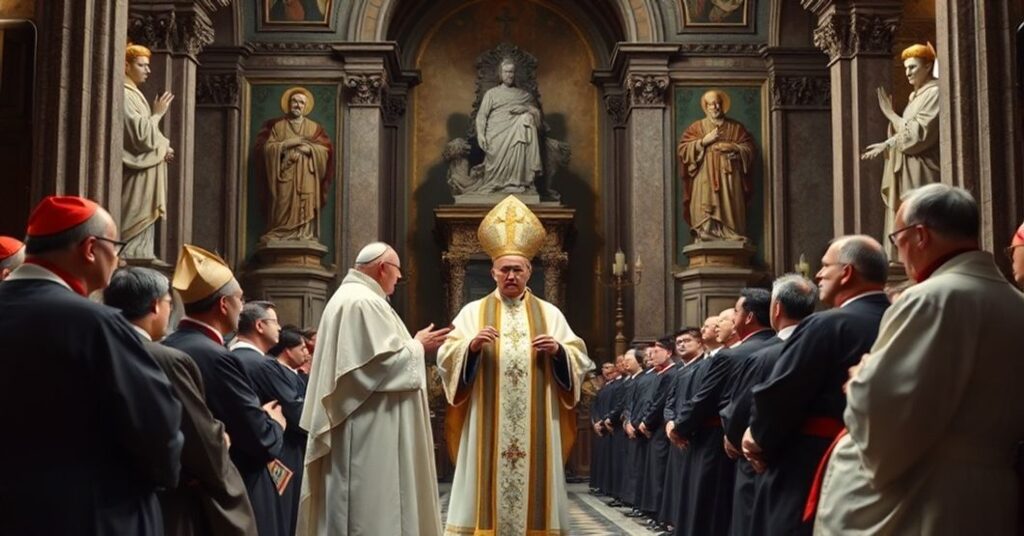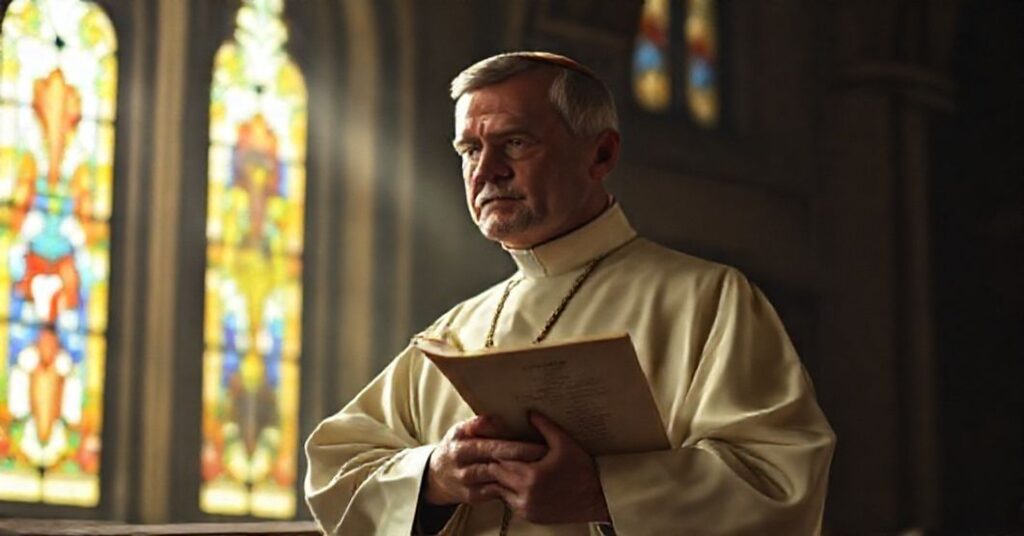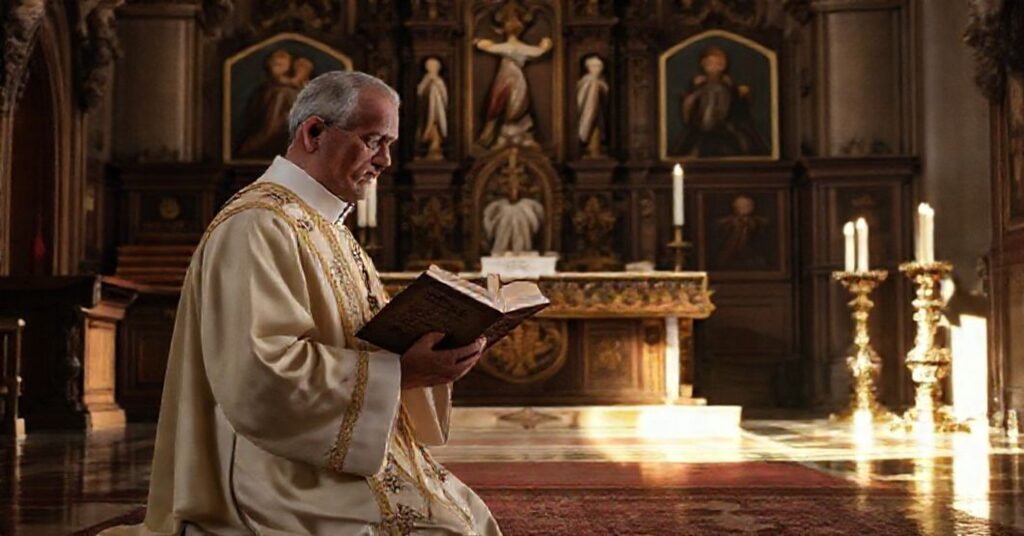Consistorium secretum (1961.01.16)
In this secret consistory of 16 January 1961, John XXIII addresses the assembled cardinals at the opening of the new year, laments persecutions and moral dangers in the world, expresses hope for peace and human concord, presents the coming ecumenical council as the privileged instrument for renewal and unity, praises the Curia, commemorates deceased cardinals, and concludes by creating four new cardinals from various nations as a sign of the universal character of the Church. In one word: the text ideologically discloses the emerging religion of the conciliar revolution – a humanitarian optimism which veils, rather than denounces, the apostasy that John XXIII himself was engineering.

